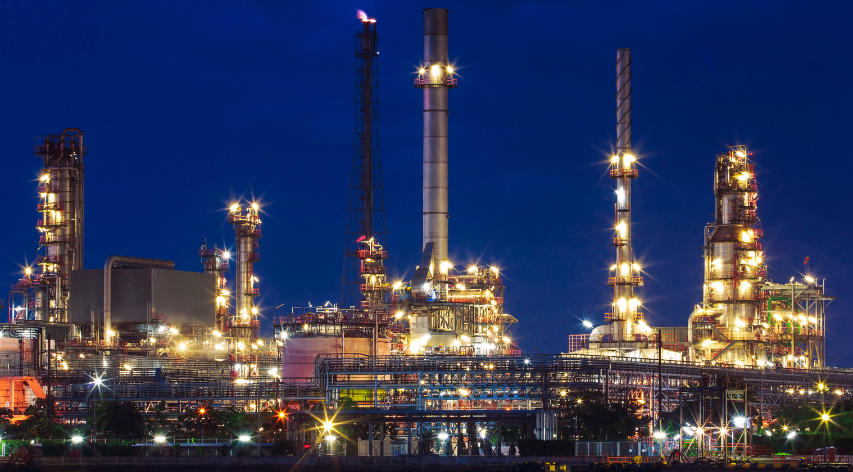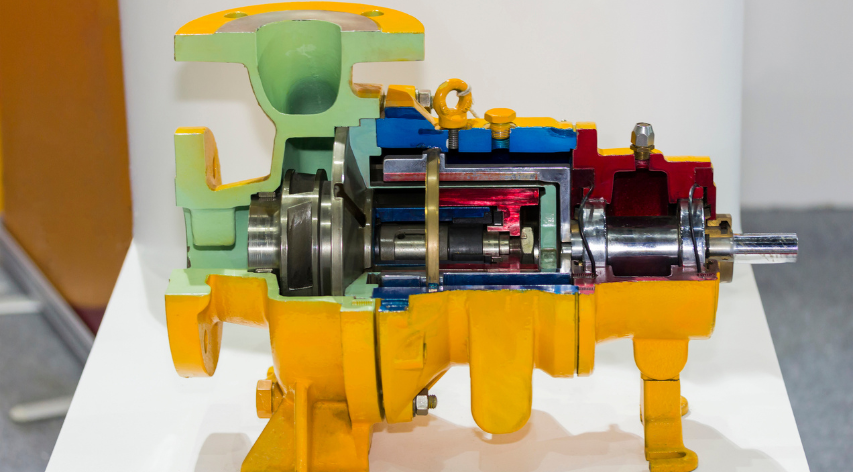CFD Modeling of a Stoker Boiler
Computational Fluid Dynamics (CFD) modeling has been widely used to design and/or retrofit boilers in the power generation and other industries where steam is generated from burning fossil fuels, biomass, or municipal waste. This modeling technique has become increasingly important due to the economic and environmental shifts, particularly with the move from coal to natural gas and biomass as fuel sources.
National data from the U.S. Energy Information Administration indicates significant differences in CO2 emissions between natural gas and coal-fired boilers. In 2022, boilers firing natural gas emitted an average of 0.97 pounds of CO2 per thousand megawatt-hour, while boilers burning coal emitted an average of 2.30 pounds of CO2 per thousand megawatt-hour. This shows that natural gas boilers emit only 42% of the CO2 compared to coal-fired boilers. Due to low natural gas prices and the concern of climate change, the last two decades have driven many facilities to convert their boilers from burning coal to burning natural gas or biomass to reduce their carbon footprint and comply with environmental regulations.
Role of CFD Modeling
CFD modeling plays a vital role in the design, analysis and optimization of boiler systems. CFD modeling can be used to simulate the complex flow patterns, heat transfer, and combustion processes inside a boiler. The benefits of using CFD modeling in boiler design include:
- Visualization of Complex Processes: CFD modeling allows engineers to visualize and analyze the combustion processes within the boiler. This includes tracking how fuel and air mix and combustion takes place, which is critical for achieving efficient and clean combustion.
- Detailed Insights: It provides detailed predictions of gas temperature, pressure, gas velocity, and species concentrations throughout the boiler. This level of detail is challenging to obtain through experimental methods alone.
- Identification of Issues: CFD modeling can identify potential issues such as local hotspots which can cause thermal stress and damage to boiler components, flow maldistribution which affects combustion efficiency and incomplete combustion, leading to higher emissions.
- Optimization: Engineers can use CFD simulations to provide detailed insights into the behavior of the boiler with different design scenarios or under different operating conditions to identify the optimal design or operating conditions.
Applications in Boiler Design – Case Study
In this blog, CFD modeling is used to evaluate the combustion performance of a stoker boiler to be converted from firing primarily coal and bark to firing bark and natural gas. The boiler is equipped with nine burners originally designed for burning coal. The owner of the boiler aims to replace the coal burners with natural gas burners and to implement over-fire air (OFA) ports to stage the combustion. The addition of the OFA ports is to reduce NOx emissions and to provide additional air to support bark combustion on the stoker grate. The CFD modeling objective is to analyze the impact of these modifications of the combustion system and the air system on the combustion characteristics and boiler performance, and to optimize the boiler design to reduce CO emissions and particulate carryover. For comparison, the boiler performance is also evaluated for the existing configuration.
The CFD model geometry, Figure 1, includes the entire furnace and part of the convection pass, with the model exit at the vertical plane through the centerlines of two steam drums. The furnace exit is at the gas inlet of the superheater tube banks. The model includes part of the generating tube banks. The tube banks in the model are represented as porous media with general calculations for pressure drop coefficients and heat transfer conductance. Individual tubes are not resolved in the model. However, the heat transfer surface of the porous media matches the external surface area of the tubes. In the existing design, nine coal burners are arranged in a three-by-three pattern on the rear wall of the furnace; the combustion system does not have OFA ports. The new design includes five OFA ports on the front wall and four on the rear wall of the furnace. One advantage of adding OFA ports is that the undergrate air can be reduced, thus, the mass of entrained bark particles decreases. Additionally, the OFA ports allow the stoker grate to operate in sub-stoichiometric conditions, which reduces NOx formation on the grate.
Bark is fed through eight air-swept spouts on the front wall. High pressure air is introduced at the bottoms of the spouts to assist the distribution of the bark across the grate depth. Some of the combustion air enters the furnace through the undergrate compartments. Bark particles are modeled as Lagrangian particles with each particle tracked at each integration time step. The mass change of the particle due to drying, devolatilization or char combustion is calculated at each time step, depending on the stage of the particle combustion process. Large bark particles fall onto the grate where they may undergo drying, devolatilization and char combustion until combustion is complete if there is sufficient oxidant. Small particles are entrained by the flue gas and particle combustion continues along the particle trajectories. These particles eventually exit the furnace as particulate carryover.
Single coal and gas burners are modeled separately to provide the flow distributions for the burner inlets in the furnace model. The single coal burner model includes both coal and air flows. The single gas burner model includes detailed gas spuds and turning vanes, and the mixing between the fuel stream and the air is modeled to provide the distributions of gas species concentrations and gas temperature at the burner throats. The predicted distributions of gas velocity, gas temperature and gas species concentrations or coal concentration are then mapped to the burner inlets in the furnace model. The flow compressibility of the gas in the gas burner is accounted for.

Figure 1: Furnace Model Geometry (Used with Permission from B&W).
Figure 2 shows the gas temperature distributions in the furnace for three different cases, each representing a distinct configuration of the combustion system:
Case 1: Existing Design
- The existing combustion system utilizes only six coal burners; each burning both coal and natural gas; the natural gas is introduced through an ignitor in the burner. The three burners at the mid-row are out of service and only a small amount of cooling air passes through them. The furnace excess air is 26% for this case.
- This configuration requires higher excess air, leading to increased heat loss through the flue gas.
Case 2: Modified Burners with an OFA System
- All the coal burners are modified to include a large gas nozzle for burning natural gas only. A new OFA port system is added, and the grate stoichiometry is reduced compared to Case 1. The furnace excess air is 18% for this case.
- The reduction in the excess air from 26% to 18% decreases flue gas heat loss, increasing overall boiler efficiency.
Case 3: Natural Gas Burners with an Enhanced OFA System
- Six coal burners are replaced with burners specifically designed for burning natural gas. The three mid-row burners are removed and replaced with four OFA ports. At the same elevation of the mid-row, five OFA ports are added on the front wall of the furnace.
- This case maintains the same total heat input and excess air level as Case 2. The strategic placement of OFA ports further optimizes combustion, reducing heat loss and improving boiler efficiency.

Figure 2: Contours of Gas Temperature (Used with Permission from B&W).
Figure 3 shows the oxygen concentration distributions in the furnace for the three different cases. In Case 1, the furnace excess air is higher than the other two cases, resulting in generally higher oxygen concentrations in the upper furnace. At the furnace exit, the oxygen concentration distribution is skewed in both Cases 1 and 2, while in Case 3 the distribution is much more uniform. This improved uniformity in Case 3 enhances the mixing between air and the flue gas and prompts complete combustion of bark particles. In Case 3, the OFA ports are positioned at a lower elevation compared to Case 2, allowing the entrained bark particles more time to burn in the region below the furnace arch, where the gas temperature is relatively high. This can be seen in Figure 4 where particle trajectories are colored by combustion stages. With the same excess air in Cases 2 and 3, more bark particles leave the furnace as ash in Case 3 than in Case 2. Statistic data shows that the particulate carryover in Case 3 is lower than that in Case 2. The particulate carryover in both Cases 2 and 3 is significantly lower than that in Case 1 in which most of the carryover is from coal particles. The average CO concentration at the model exit is similar in Cases 2 and 3, but is significantly lower than that in Case 1, despite the higher furnace excess air in this case. NOx emissions are reduced by approximately 70% from Case 1 to Cases 2 and 3.
The above example demonstrates that CFD simulations can be used to optimize boiler performance by evaluating different design modifications. CFD modeling allows for the analysis of the effects of changing boiler configurations and operating conditions such as the arrangement of OFA ports and the furnace excess air levels on key performance metrics like emissions, gas species concentration distributions, and particulate carryover. In addition to design optimization, CFD modeling is also valuable for troubleshooting existing boiler systems. By comparing simulation results for the existing conditions and potential modifications, performance issues can be diagnosed, and targeted changes can be proposed to improve overall boiler efficiency.

Figure 3: Contours of Oxygen Concentration (Used with Permission from B&W).

Figure 4: Particle Trajectories Colored by Combustion Stages (Used with Permission from B&W).
Keywords: Computational Fluid Dynamics, CFD modeling, boiler design optimization, boiler troubleshooting, stoker boiler, biomass combustion, natural gas combustion, particulate carryover, CO emissions, NOx emissions.







